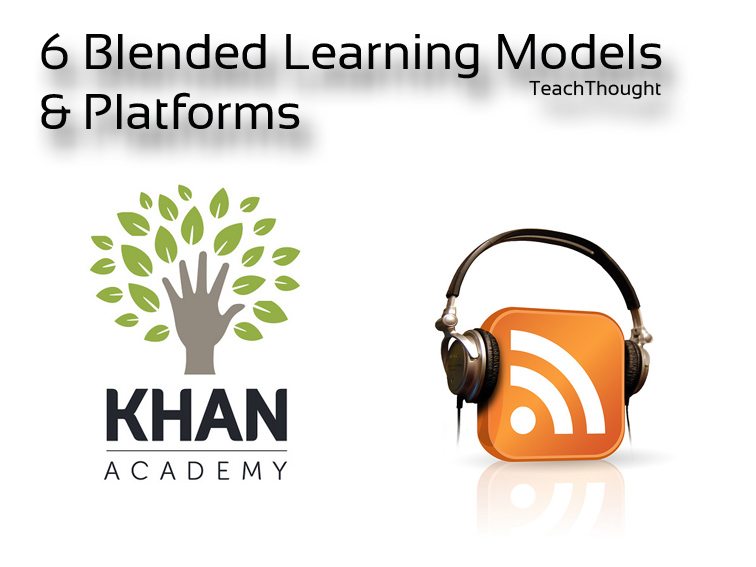
Examples Of Blended Learning Models & Platforms
contributed by Christi Wilson
Imagine a classroom where the students have the ability to spend their class time collaborating with other students, receiving additional support from the teacher, or working on hands on projects with their peers. A hands-on enriched classroom is possible with blended learning.
What is Blended Learning?
The definition of blended learning is a method of learning that combines face-to-face and online instruction.
There are different types of blended learning. In general, this type of instruction empowers the teacher to work in a more collaborative manner during class time, which allows for a more efficient school day with the intent on greater student learning. Technology tools that are now available to teachers can be overwhelming, but below are six simple ways to incorporate blended learning into the classroom.
6 Blended Learning Models & Platforms
1. Flipped Classroom
A flipped classroom is a pedagogical model in which the lecture and homework has actually been reversed.
The classroom lecture is viewed at home either through online videos or video podcasts. After viewing an online lecture, the students have the ability to chat with each other through a discussion forum and to note questions that they have from the lecture. The homework is then completed in the classroom and will typically include some type of activity such as collaborative work with a team or a hands-on lab. The teacher is available to interact with the students and act a guide.
2. Alternative Credit Recovery
PLATO is an example of an online learning option outside of the realms of traditional schooling.
High school students can remain in school and earn the credits necessary for graduation. The PLATO classroom offers self-paced courses which students can work on completing both inside of the school and at home. There are pre-tests given to place students in the appropriate courses, and they have the opportunity to master the content and meet the rigorous academic standards set by the school district. The course is facilitated by a credentialed teacher, and upon completion the student can earn course credit.
3. Social Media Blending
There are many ways to integrate social media into the classroom setting.
By integrating social media, students can show mastery of content through a variety of digital tools such as blogging, Skype, Edmodo or video conferencing. Classmates have the option to constantly share knowledge and interact with each other well beyond the hours spent in the classroom and online discussions can become engaging.
4. Khan Academy
This is a free website where students can access thousands of tutorial videos, along with interactive practice exercises, on almost any subject.
The Khan Academy is a good website to use within the classroom for students that either need remediation or acceleration. Teachers have the option to create classroom accounts and the teacher can monitor each student’s progress by accessing data on completed exercises. The data indicates areas of strengths as well as problematic areas. Students are motivated by earning points and badges, and more importantly with being able to see visible progress to specific goals and content mastery.
5. Project-Based Learning
PBL is an hands on inquiry and collaborative based learning model in which students seek answers to a real world challenge or problem. It is a relevant and student-driven project completed in the classroom with presentations given to an audience.
If students access content at home–.e.g, researching, compiling data, and general independent work–the majority of their class time can be spent working collaboratively with their teams at school.
6. Moodle
Moodle is a course management system that gives teachers options to post assignments, lectures, videos, and much more.
Students can interact with each other through discussion forums, private messaging and chat rooms. Students have the ability to upload completed assignments by attaching files. Grades are added to the gradebook on the same site and students can also view feedback given by the teacher. Moodle performs well when used in addition to face-to-face meetings.
The Benefits Of Blended Learning
Blended learning offers many opportunities for both the teacher and the student that a traditional brick and mortar classroom may not. With the increasing demands of state standards and busy school days, blended learning permits students to learn a portion of the academic content at home and gives teachers the ability to engage students in a richer, deeper, and more meaningful context in the classroom.
Blended learning enables the teacher to become more of a participant in student learning and can help facilitate student mastery of content with enriching learning activities introduced and completed when the class meets face to face.
Christi Wilson is a credentialed teacher of highly gifted students in northern Nevada. She has eleven years of classroom teaching experience. As a mother of three busy boys, she knows how important it is to keep students engaged in the classroom and interested in a lifetime of learning; this article was created by onlineschools.com

